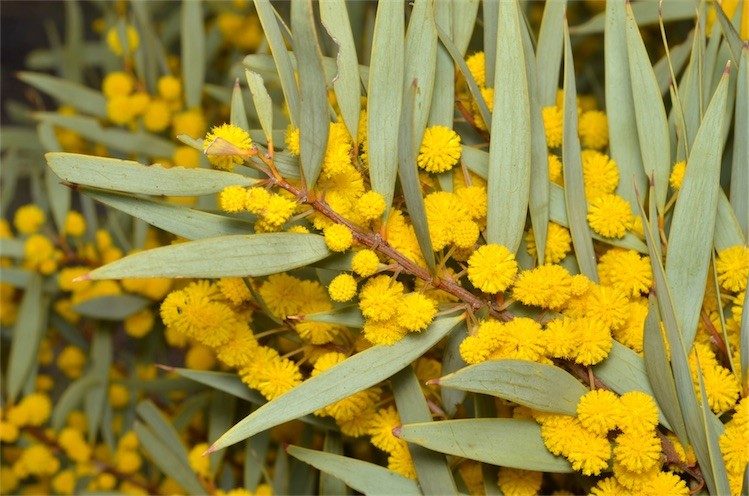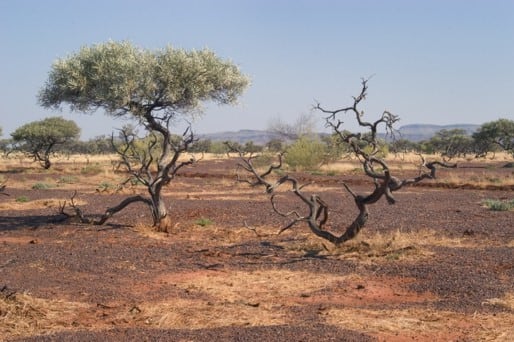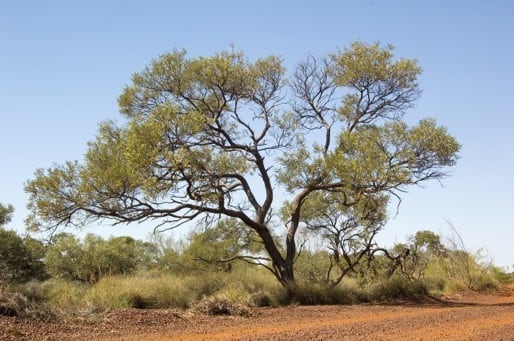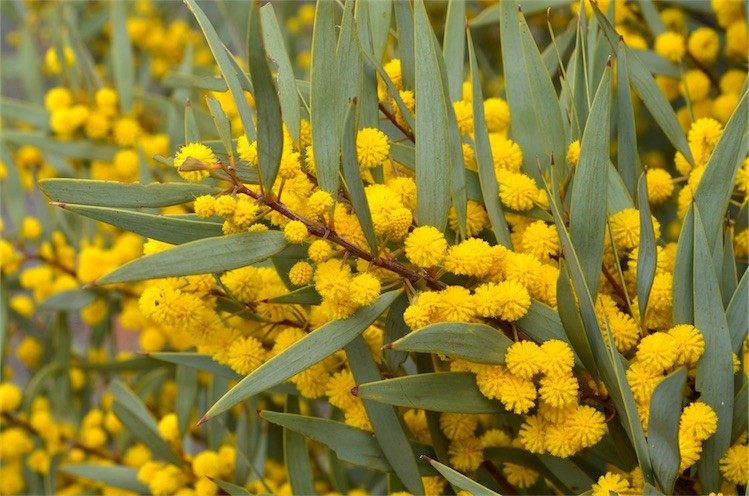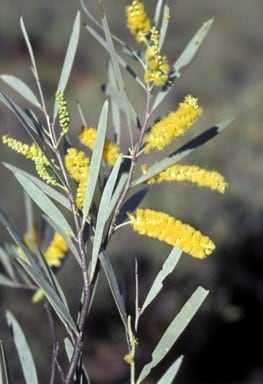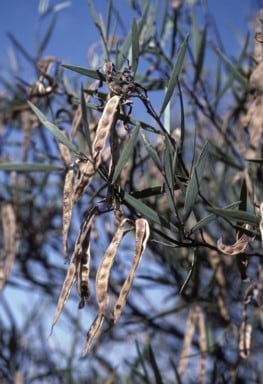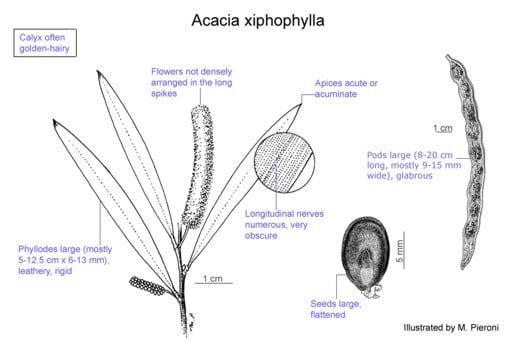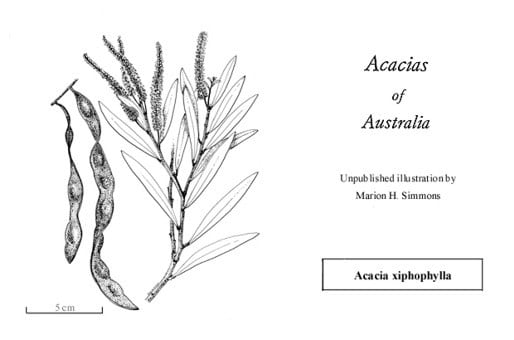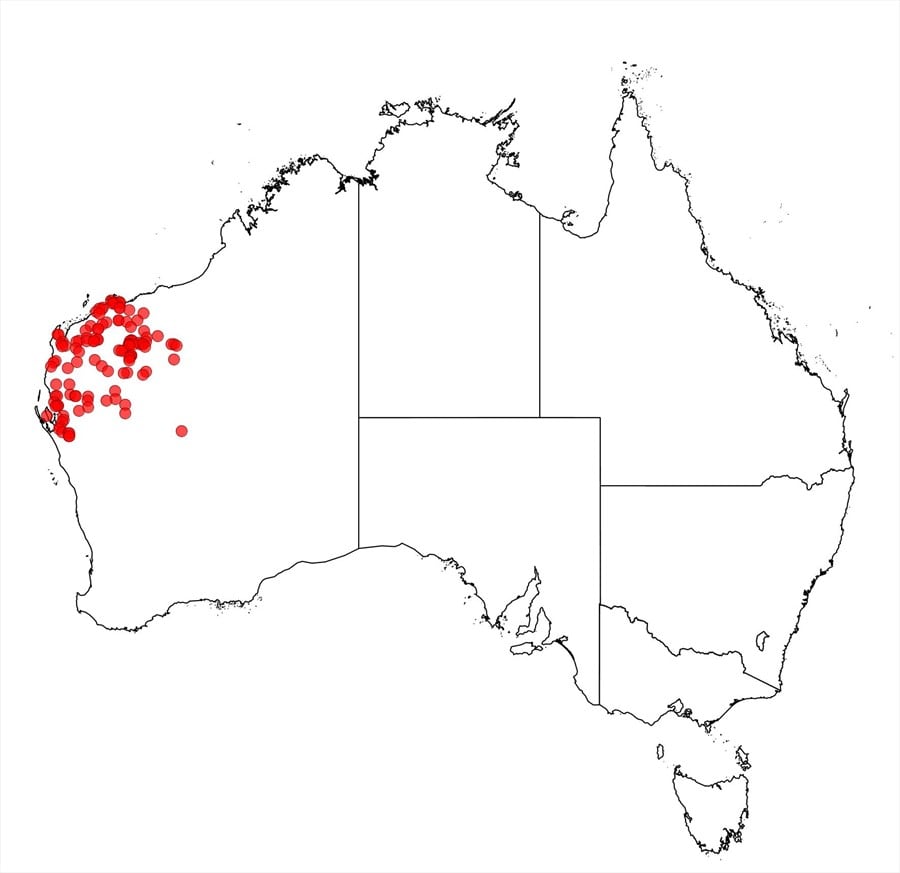Acacia xiphophylla E.Pritz.
WATTLE
Acacias of Australia
Common Name
Snake-wood
Family
Fabaceae
Distribution
W.A., widespread across the Pilbara from Shark Bay NE to near Roebourne and Roy Hill, with one collection from near Wiluna.
Description
Shrub or tree 3–7 m high, often gnarled, bushy, main branches often rather contorted and widely spreading. Branchlets glabrous or sparingly appressed-puberulous. Phyllodes ascending, narrowly elliptic to narrowly oblong-elliptic, tapering to acute or acuminate apex and long-attenuate base, straight to slightly curved, 5–12.5 cm long, (5–) 6–13 (–16) mm wide, rigid, ±glaucous, sericeous, glabrescent, with numerous very obscure closely parallel nerves; central nerve sometimes slightly raised. Inflorescences rudimentary 1- or 2-headed racemes with axes c. 0.2 mm long, often growing out; peduncles 5–7 (–17) mm long, ±appressed-puberulous; spikes 2.5–5.5 cm long, 5–7 mm diam., loosely flowered, light golden; receptacle appressed-hairy. Flowers mostly 5-merous; sepals 1/4–1/3 length of petals, united, often golden-puberulous. Pods pendent, linear, raised over and sometimes ±constricted between seeds, straight to slightly curved, 8–20 cm long, (7–) 9–15 (–18) mm wide, crustaceous-woody, irregularly coarsely reticulate, glabrous, shining. Seeds longitudinal, broadly elliptic, 6–10 mm long, peripherally crested, dull, brown; aril/funicle fleshy.
Habitat
Grows on sometimes subsaline clay flats, stony plains and hills, in Acacia shrubland and low woodland, dominating in localised areas.
Specimens
W.A.: just N of Billabong, North West Coastal Hwy, G.Phillips for A.M.Ashby 4828 (AD, MEL, NY, PERTH); Wandagee, Minilya R., C.A.Gardner 6165 (PERTH); c. 15 km S of Roy Hill Stn on Great Northern Hwy, B.R.Maslin 5272 (PERTH); 18.5 km W of Tom Price, B.R.Maslin 5573 (BRI, CANB, NSW, PERTH); Wiluna area, Dec. 1970, J.Morrissey (PERTH).
Notes
Seemingly most closely related to the more southerly distributed A. burrowsiana. Superficially similar to the flat phyllode variant of A. intorta; and to A. eremaea (sect. Plurinerves). Perhaps related to A. hamersleyensis which is most readily distinguished by its more obvious phyllode nerves, denser spikes, more deeply divided, white-villous calyx and pilose pods.
FOA Reference
Data derived from Flora of Australia Volumes 11A (2001), 11B (2001) and 12 (1998), products of ABRS, ©Commonwealth of Australia
Author
R.S.Cowan
Minor edits by B.R.Maslin, J.Reid & J.Rogers
This identification key and fact sheets are available as a mobile application:
URL: https://apps.lucidcentral.org/wattle/
© Copyright 2018. All rights reserved.
